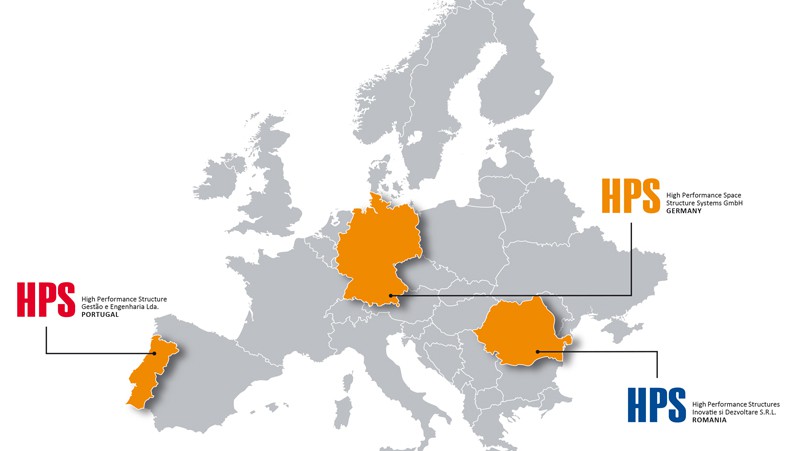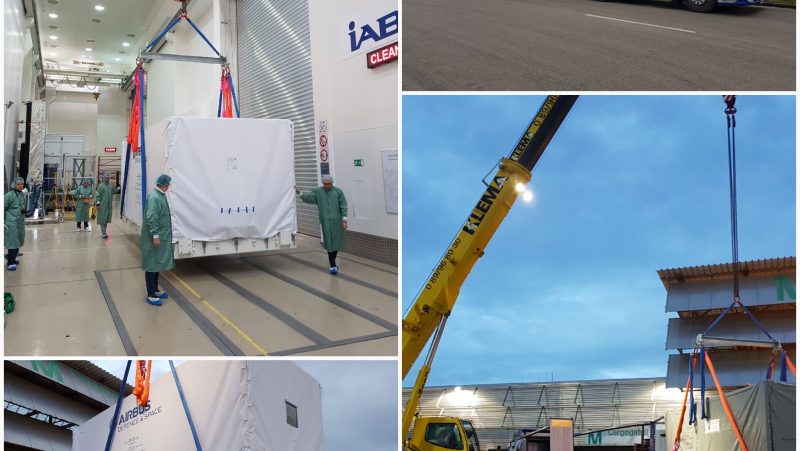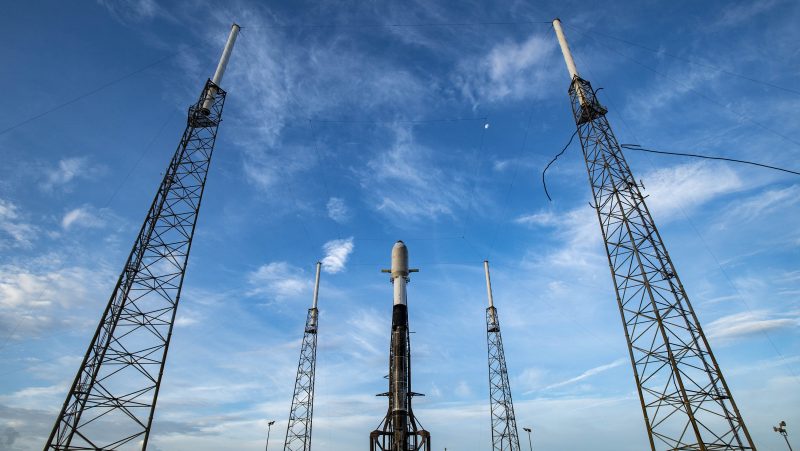With new subsidiary in Romania now present in three countries
Even before the end of a strong year 2015 the top-management at the headquarters of the European HPS-group in Munich, Germany, had set the course towards expansion; it took just a few months until on May 3rd, 2016, the Romanian subsidiary „High Performance Structures Inovatie si Dezvoltare S.R.L. (HPS – RO)“ opened its gates as the third member of the HPS-Group. Owner of HPS-RO is the German High Performance Space Structure Systems GmbH (HPS-D), whose main shareholder, Dr. Ernst K. Pfeiffer, is also the founder and CEO of all company members of the group. In addition, further managers, employees as well as strategic investors hold shares in the German and Portugese HPS companies.
HPS-RO will cover the need for additional capacities of the group in the fields of engineering, development, secondary and tertiary structures, as well as MGSE (mechanical ground support equipment). Suppliers and partners in Romania are highly renowned companies, institutes, and universities specialized on mechanical precision manufacturing, welding, material- and structure characterization, process verification and testing. Final assembly will be carried out by HPS in Bukarest.
HPS-RO has taken residence in „Sector 2“; the place is close to the local subway, just three kilometers from the city center, 20 kilometers from the international airport Otopeni and almost directly adjacent to the large traffic arteria of the country that connect Romania tightly with Western Europs webs of logistics.
The Romanian company starts with a core staff of 5-8 project managers, engineers, technicians and other specialists, headed by Astrid Draguleanu, herself an engineer. This move takes the HPS group beyond the threshold of 60 highly motivated members of the „Team to Trust“, as the company slogan states. The Romanian core team is planned to double in numbers as fast as possible. This will help to surpass the target mark of 100 employees of the HPS group in Europe even quicker than it was announced for 2020 by CEO Ernst Pfeiffer just two years ago.
The reason for the steady and strong growth the revenues of which are – as a company principle – immediately reinvested in new technologies as well as in lateral growth and, accordingly, in jobs – is that the company has successfully established its position as one of the very few medium-sized subsystem specialists for the European – and will be so soon – on non-European space markets. At an early stage the entrepreneur had realized that it will be just a matter of time that commercial structures will rule the space business, too. That, in consequence, means that it will take larger midsized companies to help the large system integrators reduce their vertical manufacturing integration by delivering complete subsystems and assembles in order to give room for a stable and manageable chain of value adding from the smallest part to the final product.
„Space is a growing business“ says Pfeiffer, „it develops along the lines of increasing commercial demand on markets like satellite based television, communications, and navigation, while at the same time there is a stable need for high end space technologies in service of science as well as of governments securing borders and observing earth, oceans and climate change. It is just like in the automotive branch: The dominating labels realize their added value to a great extent on the basis of the quality of cost effective subsystems. The stronger the growth of the mark, the better the chances for the best on the next level, who are also big enough to manage the coordination of many suppliers of single parts.“
Numerous discussions with politicians and managers from countries that had in the beginning been opted for at HPS headquarters have finally led to the decision in favor of Romania: “Romania is among the countries that on the one hand have the largest need to catch up with Western economic standards of living, on the other hand Romania indeed has outstanding universities and top-level capacities of engineering and quality standards. In addition, the country has a long tradition in aeronautics and aerospace: The first jet aircraft wasdesigned and constructed by the Romanian engineer Henri Marie Coandă as early as 1910. Progress in Romania will therefore take place in big leaps, not in small steps. All it takes is a series of little pushs, and one is now coming from us.“ so Pfeiffer on the outlooks for the third member of the European HPS group.





